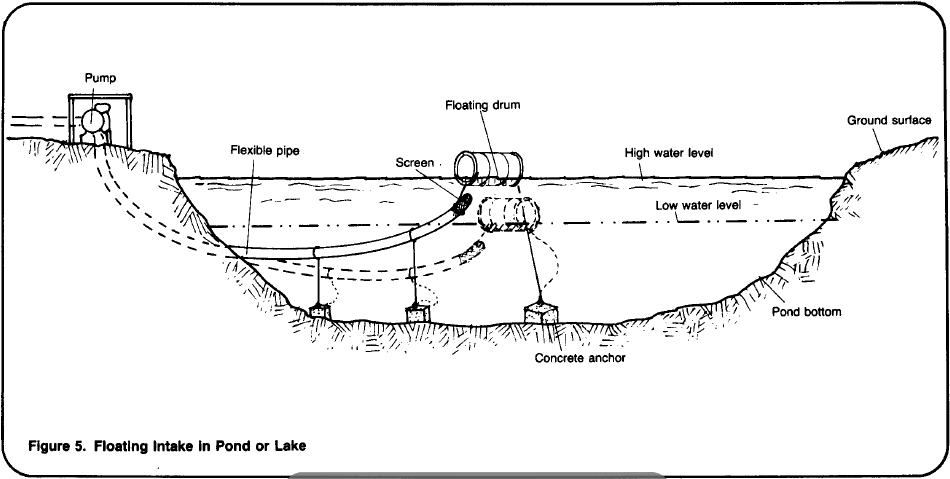Difference between revisions of "Water Portal / Rainwater Harvesting / Surface water / Floating intake"
(→Suitable conditions) |
(→Acknowledgements) |
||
| Line 34: | Line 34: | ||
* Brikke, François, and Bredero, Maarten. ''[http://www.google.com/url?sa=t&rct=j&q=&esrc=s&source=web&cd=2&ved=0CC0QFjAB&url=http%3A%2F%2Fwww.who.int%2Fwater_sanitation_health%2Fhygiene%2Fom%2Flinkingintro.pdf&ei=cwJpT-zaO-OiiQKCst2rBw&usg=AFQjCNEWOQhTgF3a7lzhuw5OA2KmbVGxcA&sig2=Rt2EURUyGVqDcwFg6p0xAw Linking technology choice with operation and maintenance in the context of community water supply and sanitation: A reference document for planners and project staff]''. World Health Organization and IRC Water and Sanitation Centre. Geneva, Switzerland 2003. | * Brikke, François, and Bredero, Maarten. ''[http://www.google.com/url?sa=t&rct=j&q=&esrc=s&source=web&cd=2&ved=0CC0QFjAB&url=http%3A%2F%2Fwww.who.int%2Fwater_sanitation_health%2Fhygiene%2Fom%2Flinkingintro.pdf&ei=cwJpT-zaO-OiiQKCst2rBw&usg=AFQjCNEWOQhTgF3a7lzhuw5OA2KmbVGxcA&sig2=Rt2EURUyGVqDcwFg6p0xAw Linking technology choice with operation and maintenance in the context of community water supply and sanitation: A reference document for planners and project staff]''. World Health Organization and IRC Water and Sanitation Centre. Geneva, Switzerland 2003. | ||
* [http://www.lifewater.org/resources/rws1/rws1p4.pdf Choosing where to place intakes.] Water for the World. | * [http://www.lifewater.org/resources/rws1/rws1p4.pdf Choosing where to place intakes.] Water for the World. | ||
| + | * [http://www.samsamwater.com/library/TP40_11_Surface_water.pdf Surface water intake and small dams.] Nhamo Masanganise. | ||
Revision as of 20:17, 30 April 2012
Floating intakes for drinking-water systems allow water to be abstracted from near the surface of a river or lake, thus avoiding the heavier silt loads that are transported closer to the bottom during floods. The inlet pipe of a suction pump is connected just under the water level to a floating pontoon that is moored to the bank or bottom of the lake or river. The pump itself can be located either on the bank or on the pontoon. The advantages of placing the pump on the pontoon are that the suction pipe can be quite short and the suction head will be constant (less risk of cavitation). If the river currents frequently carry logs or large debris, a floating inlet needs extra protection or it will be damaged. To construct the pontoon, a steel or wooden frame can be attached to floats made from empty oil drums, plastic containers, or sealed steel tubes at least 30 cm in diameter.
Contents
Suitable conditions
Rivers or lakes.
Pond and lake intakes should be located so that the best quality water enters the system. Their location must prevent the drawing of water contaminated by contact with humans and animals or by organic material and suspended matter. Proper location of the intake will help ensure that suitable water is available to the community.
Generally developing intakes for ponds and lakes is expensive. The further away the users are from the source, the more expensive the system. Where possible, the source and intake should be located near the community. Especially in times of drought, a system far from the community that is piped to the community, could stop short of providing consistent water. In this case, make sure the dry and wet season volumes of water are known beforehand, so that water sources may be diversified in times of low to no water.
Whenever practicable a river intake should be sited where there is adequate flow; at a level that allows gravity supply to minimise pumping costs; upstream of densely populated and farming areas to reduce silt inflow; upstream of cattle watering places, washing places and sewer outlets (to eliminate pollution of the water); upstream of bridges (to reduce velocity/turbulence).
Intake designs aim to avoid clogging and scouring and to ensure the stability of the structure even under flood conditions. Where the river transports no boulders or rolling stones, an unprotected intake may be adequate.
Construction, operations and maintenance

A floating-intake system is usually operated by a caretaker. The pump and inlet pipe must be checked before and during pump operation, and any obstructing debris removed and damage repaired. This is particularly important during the rainy season. Every day, the mooring cables should be checked and adjusted if necessary, and the flexible pipe connections checked for leaks. Any damage to the mooring or the pontoon structure must be repaired immediately, which may require the assistance of several people. Depending on the materials used, the pontoon should be painted regularly, at least once a year for steel parts.
Potential problems
— floating objects collide with the floating pontoon;
— the pipe connectors between the pontoon and the bank wear out;
— the lake or river water may be of poor quality.
Costs
Reference manuals, videos, and links
- Choosing where to place intakes. Water for the World.
- Maintaining intakes. US AID.
- Surface water intake and small dams. Nhamo Masanganise.
Acknowledgements
- Brikke, François, and Bredero, Maarten. Linking technology choice with operation and maintenance in the context of community water supply and sanitation: A reference document for planners and project staff. World Health Organization and IRC Water and Sanitation Centre. Geneva, Switzerland 2003.
- Choosing where to place intakes. Water for the World.
- Surface water intake and small dams. Nhamo Masanganise.


